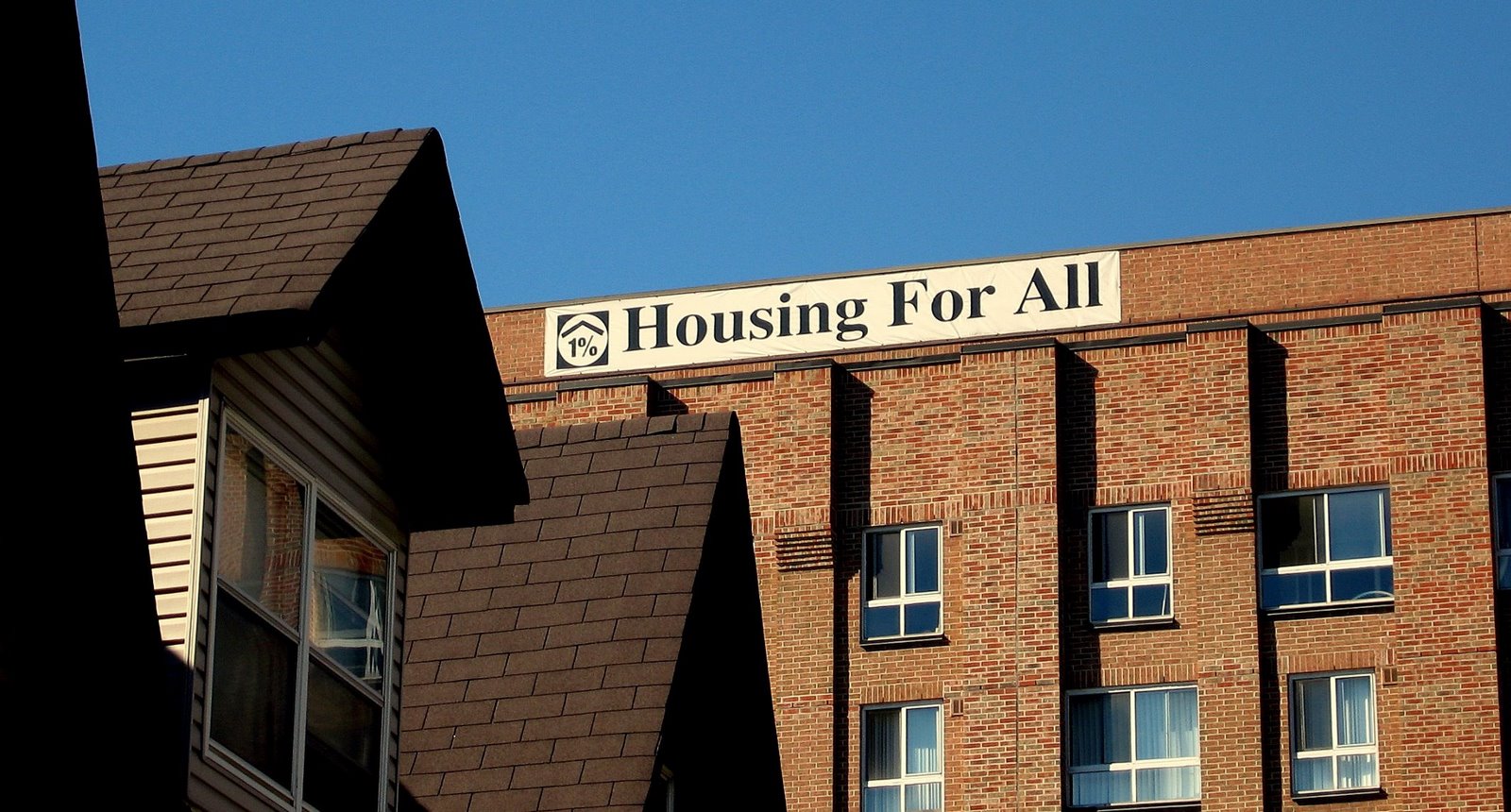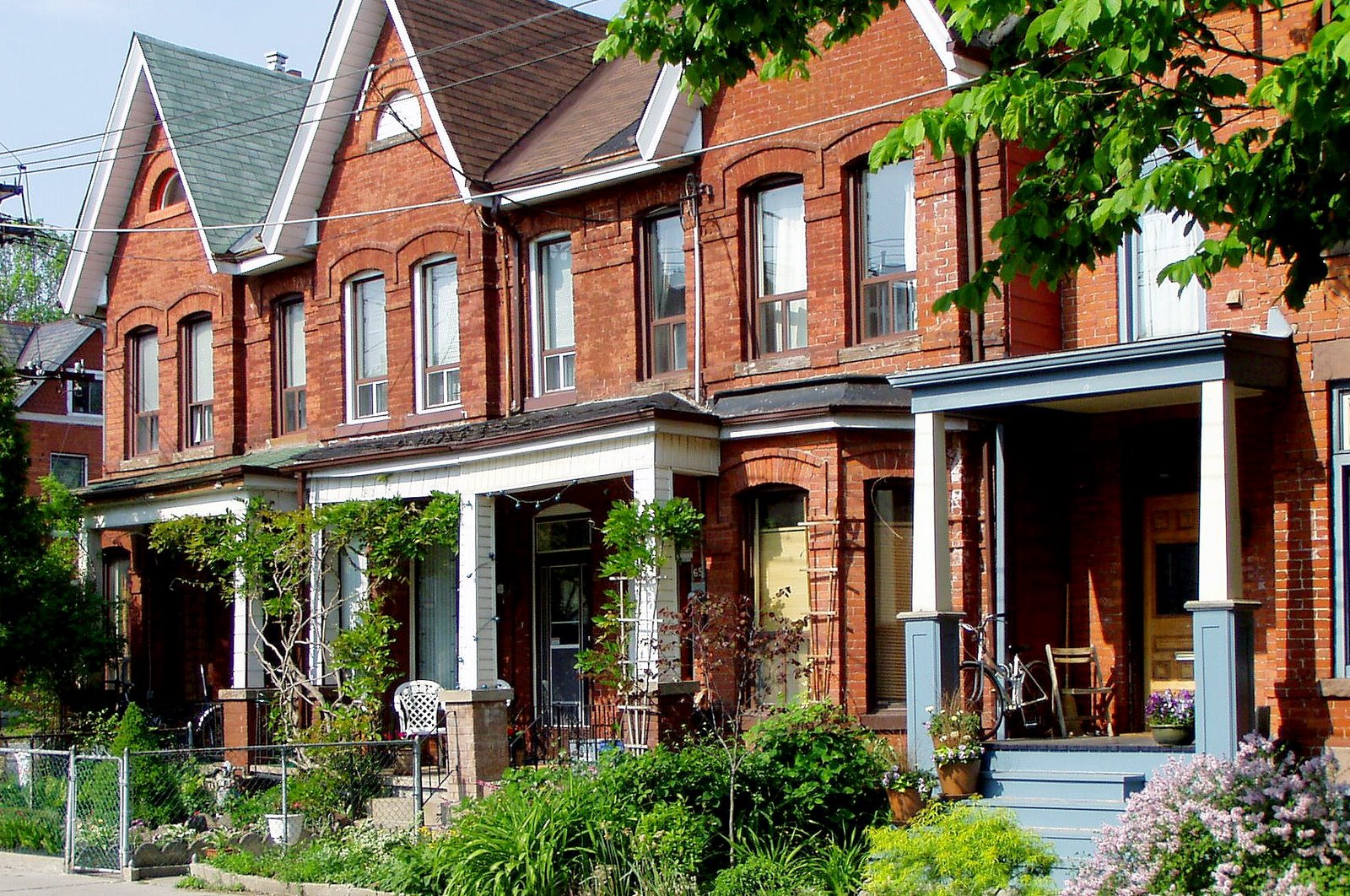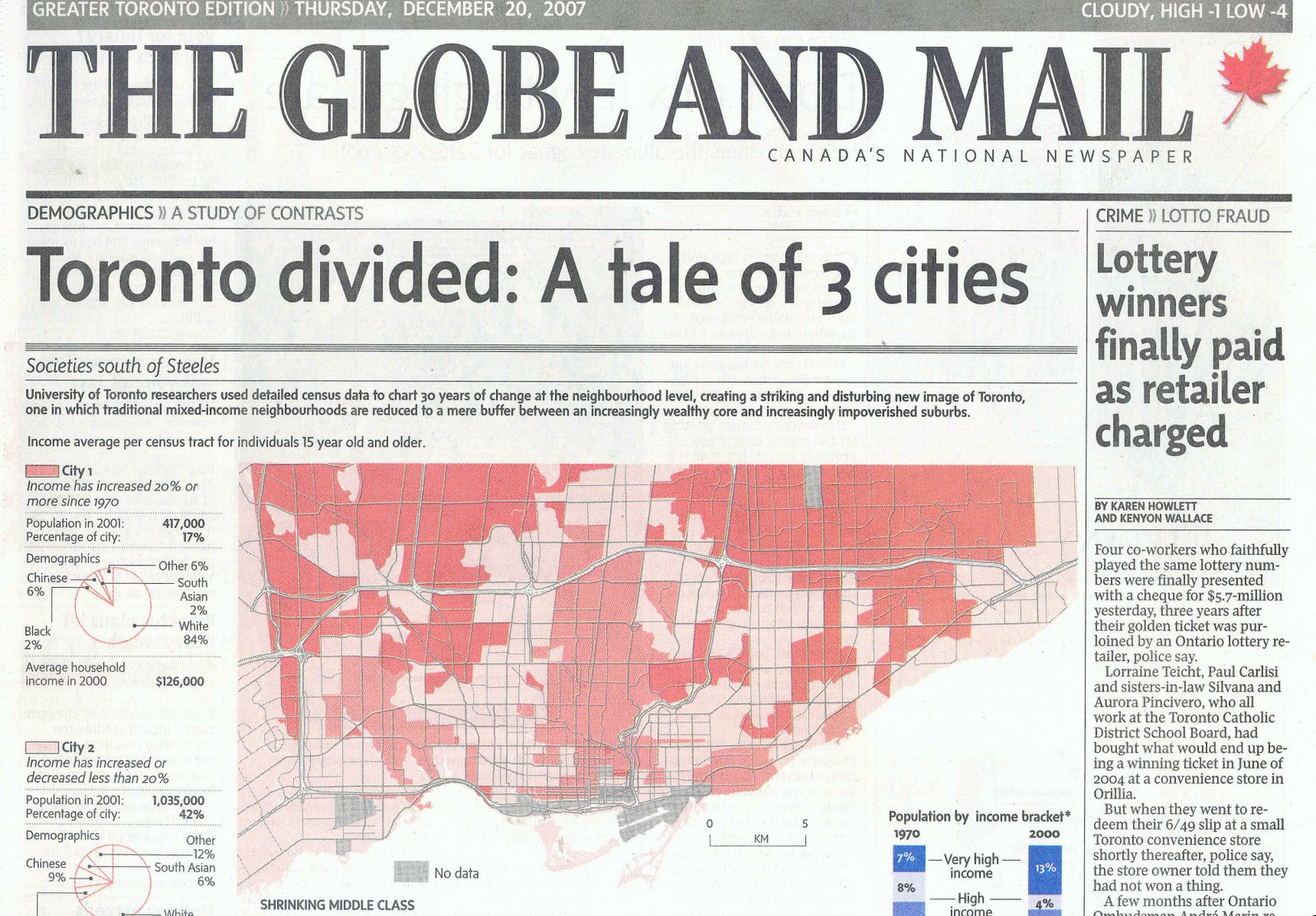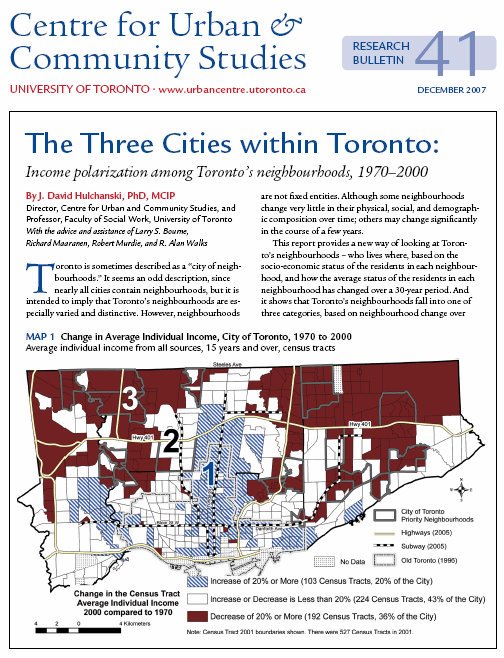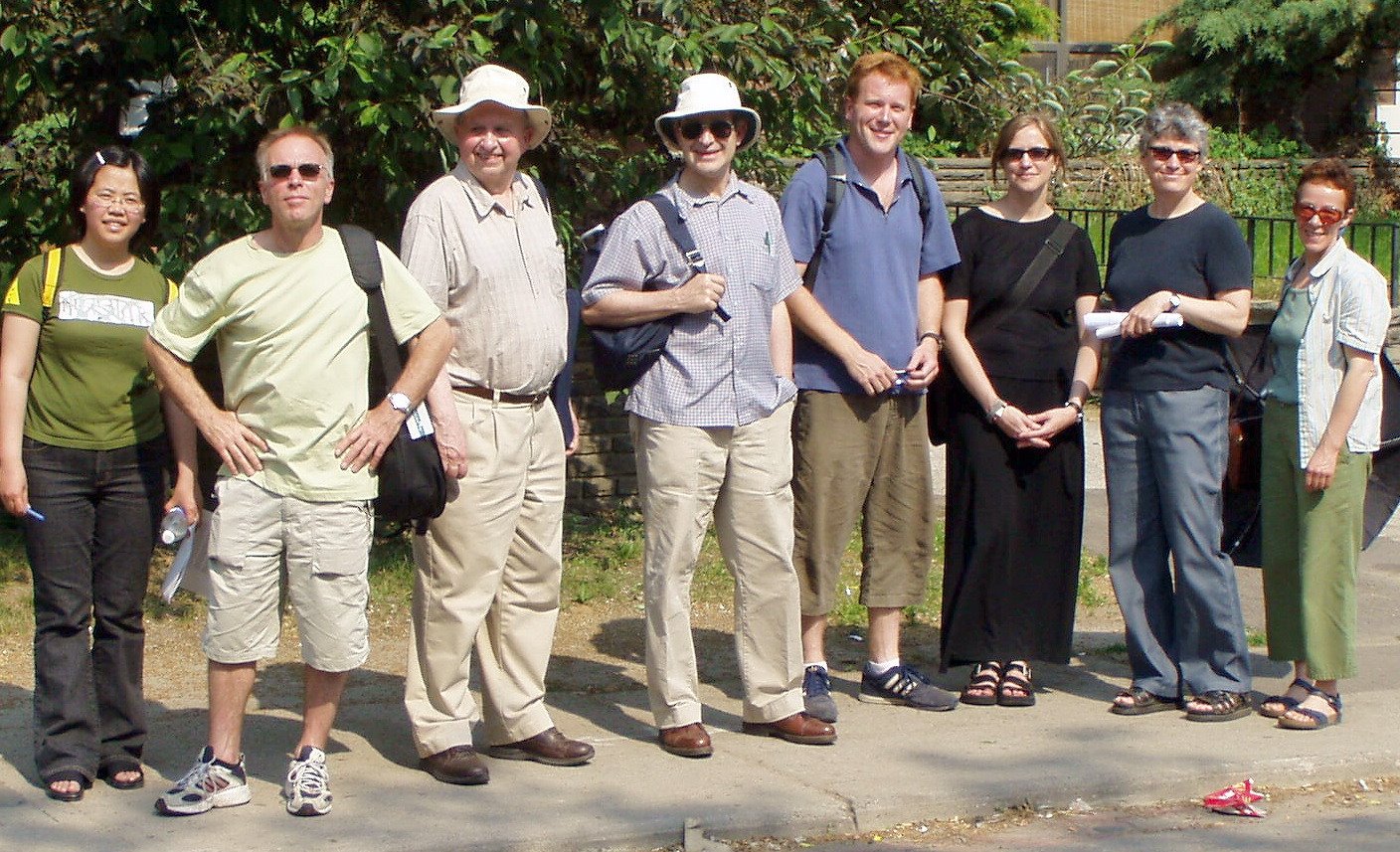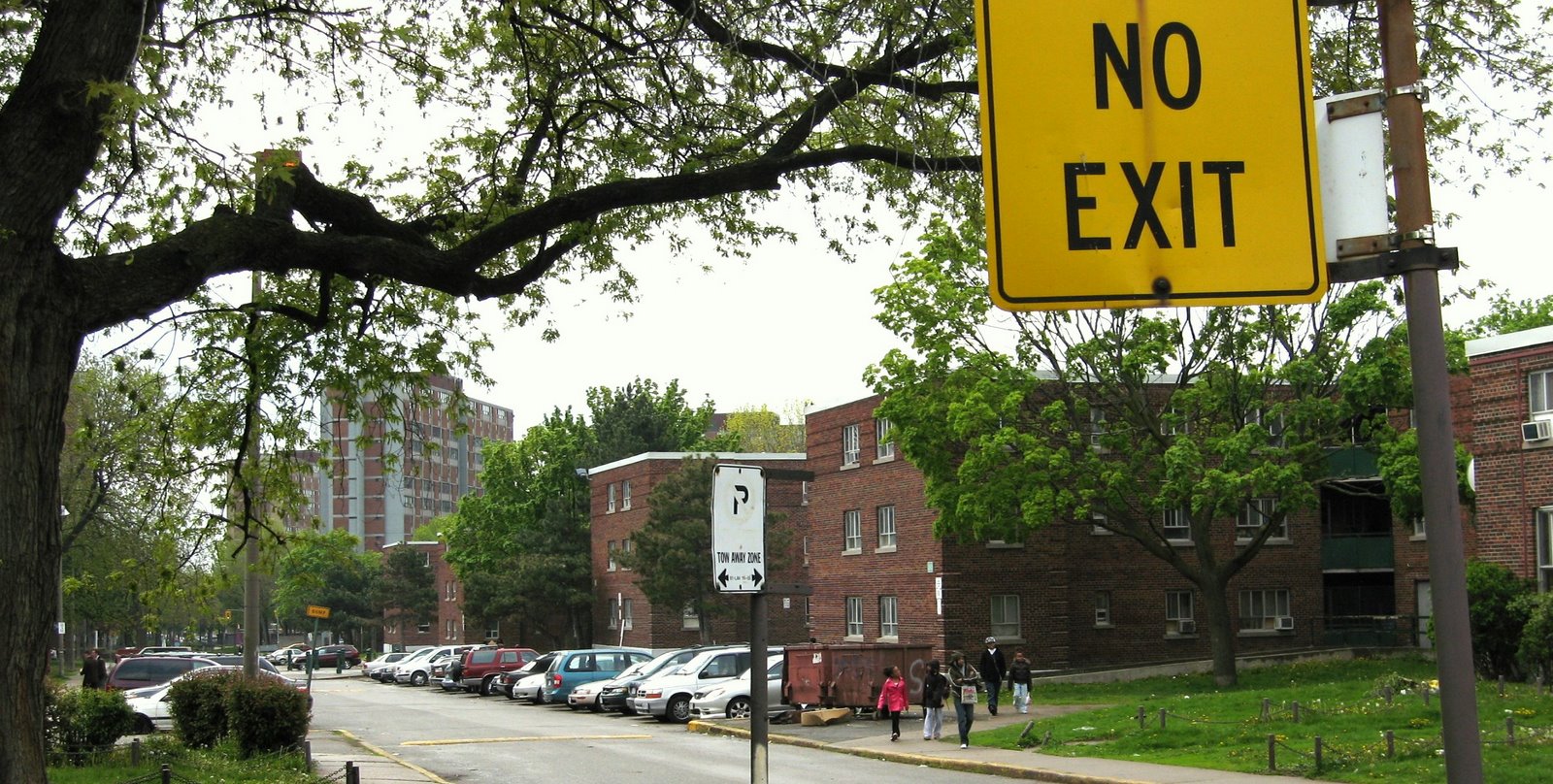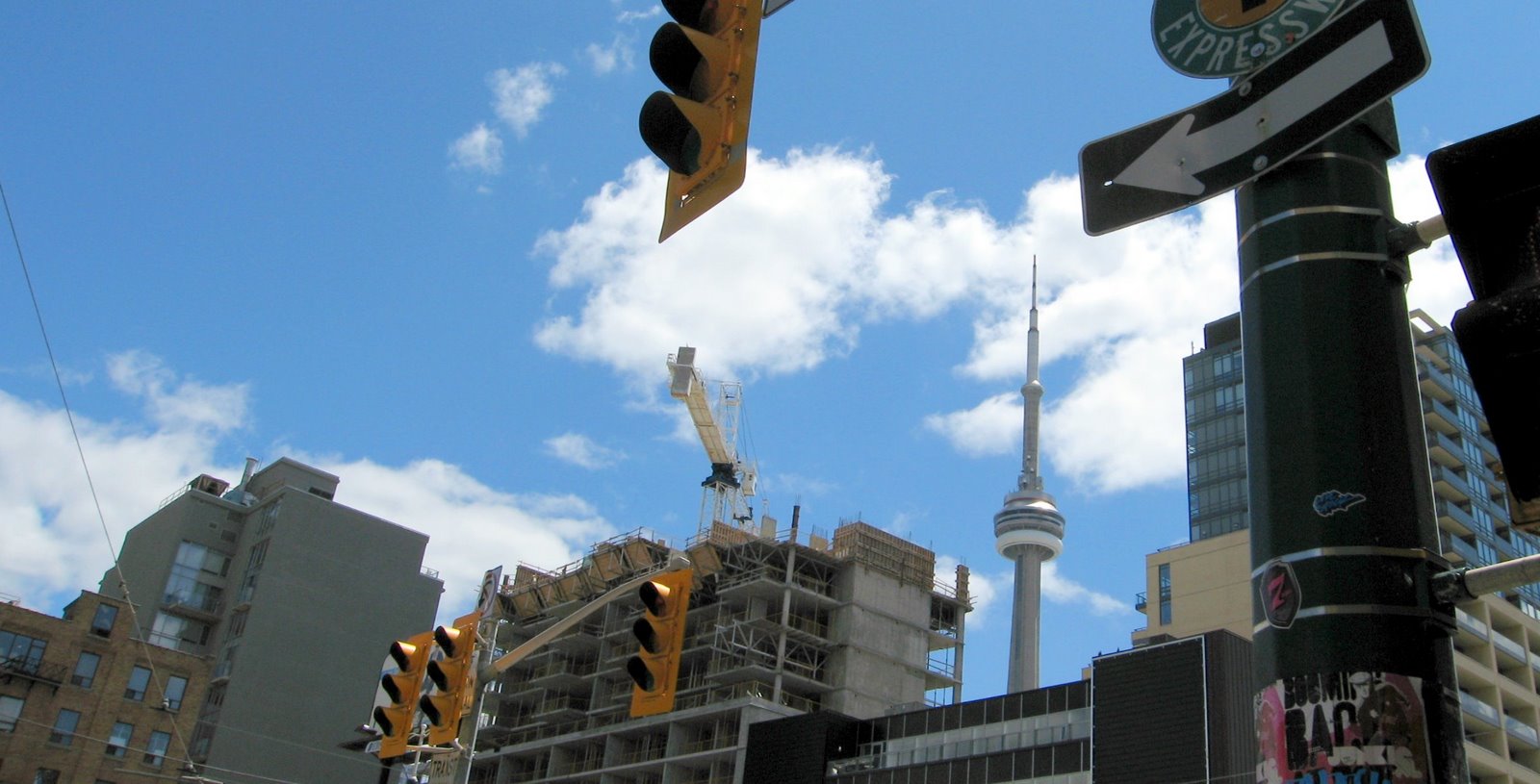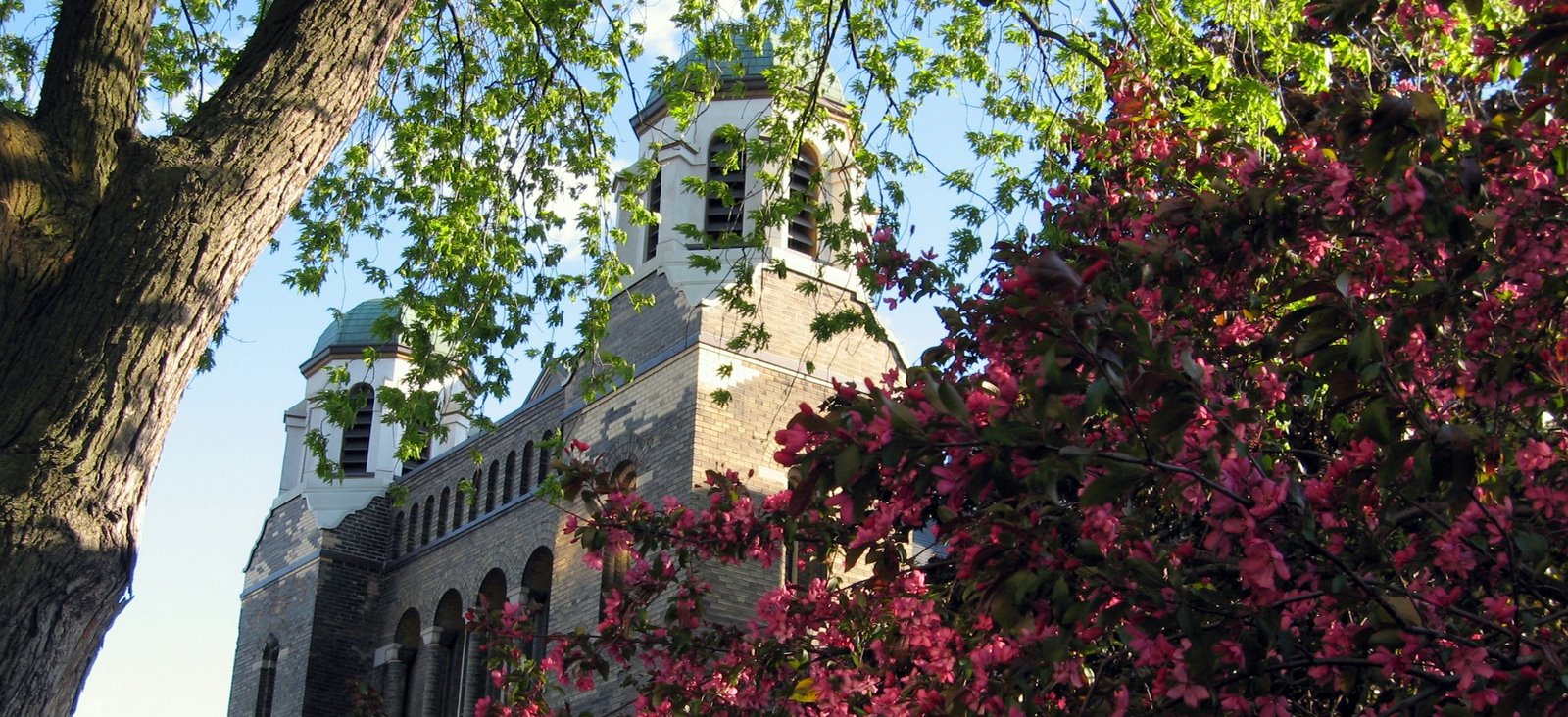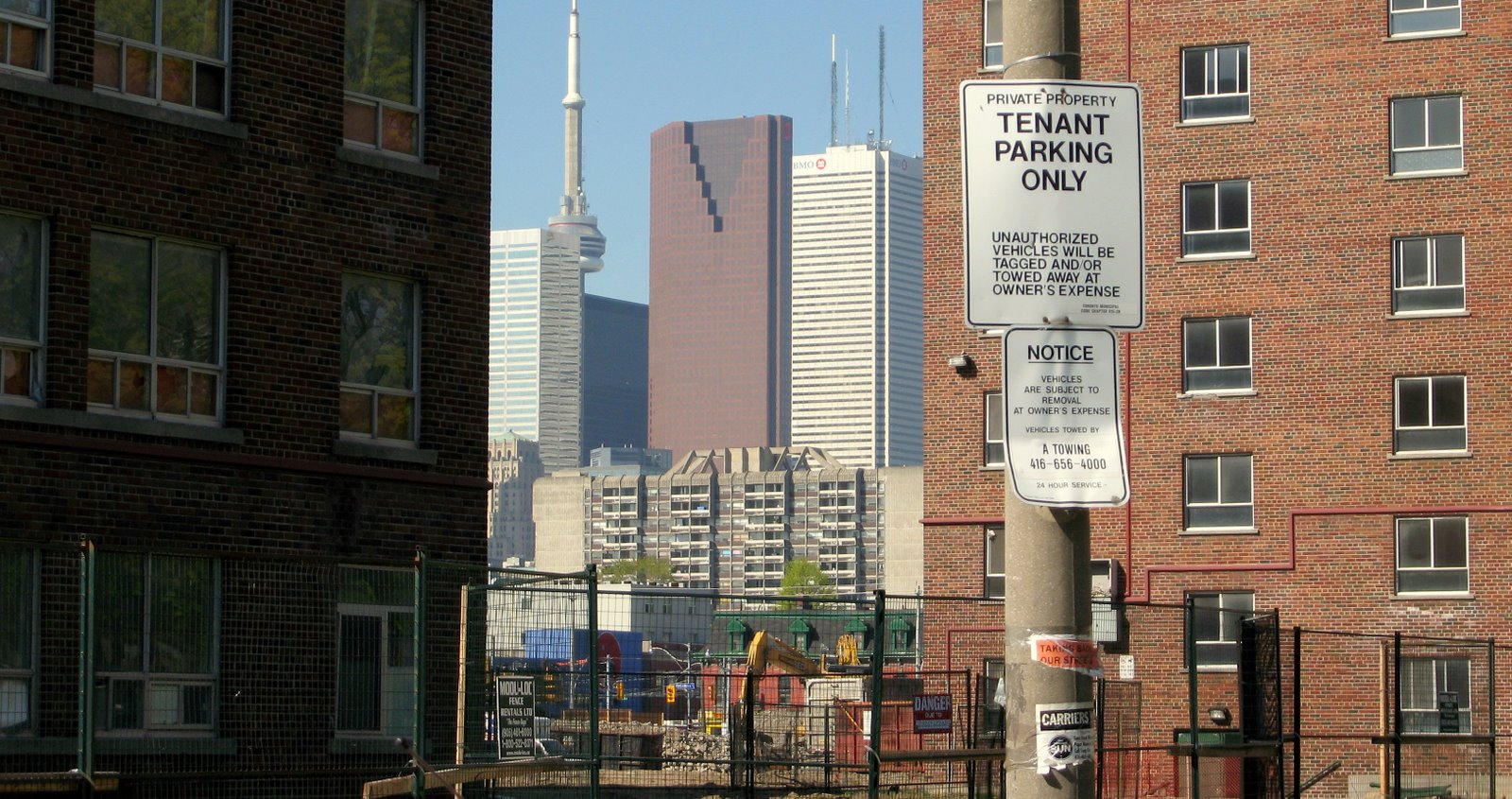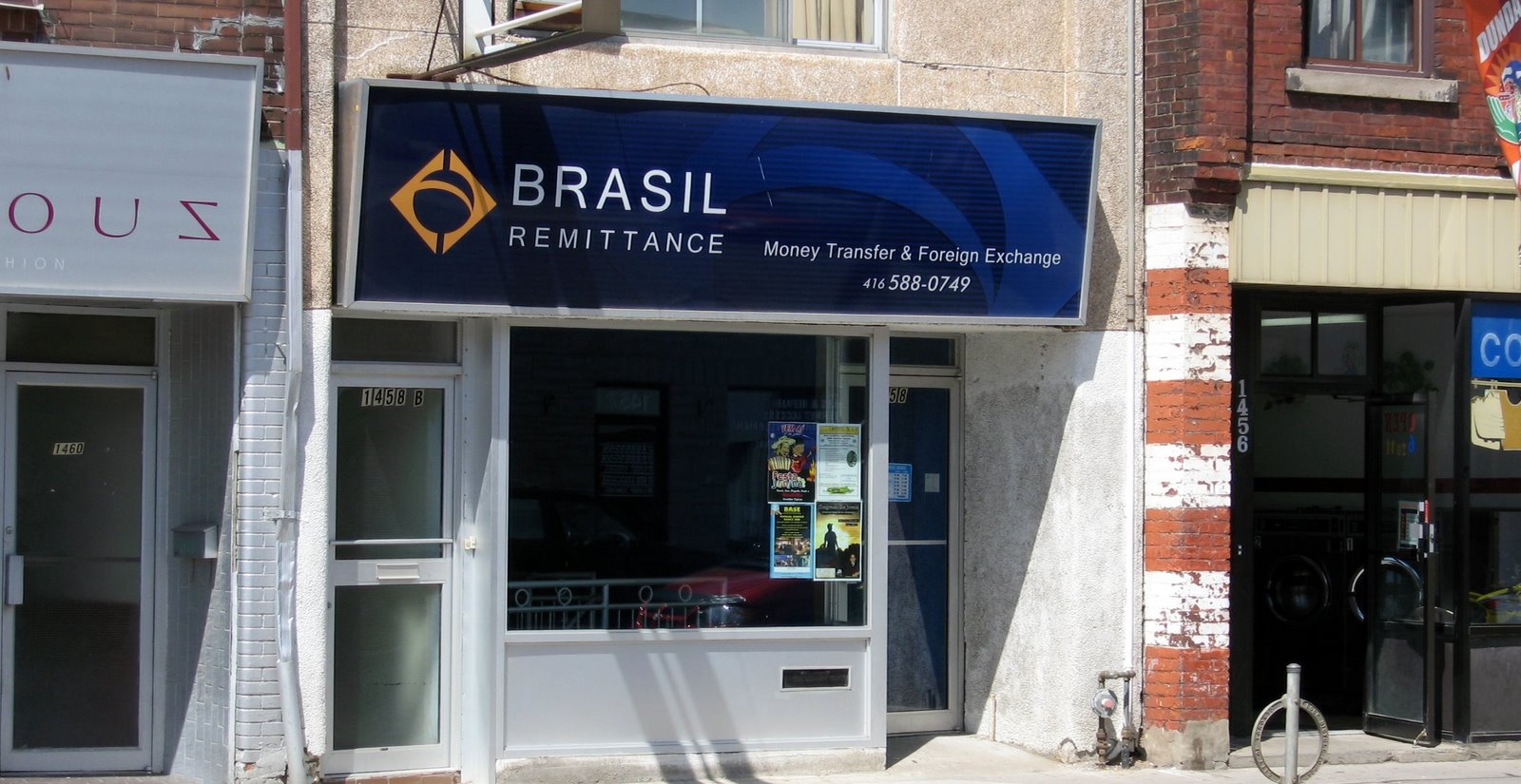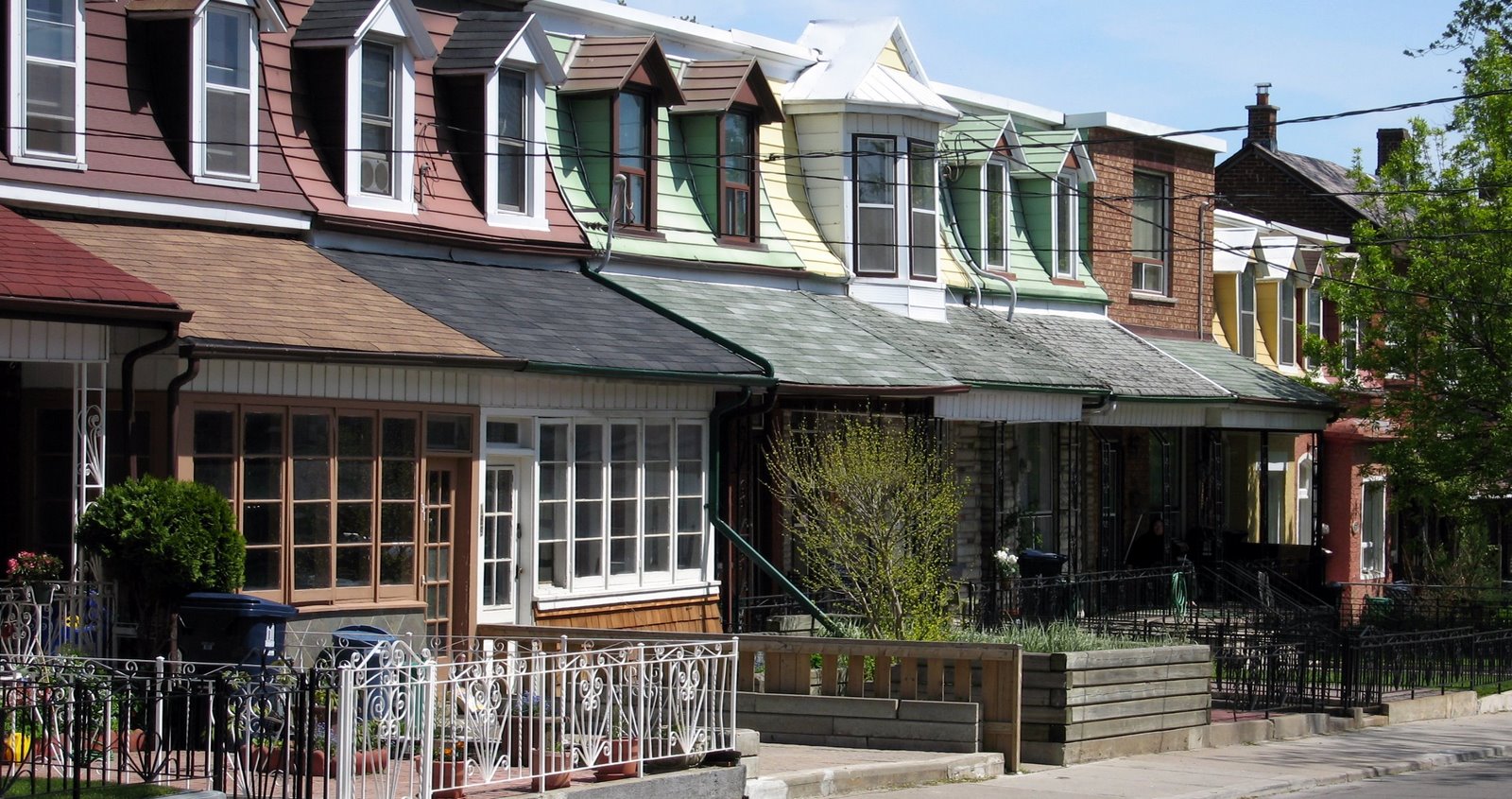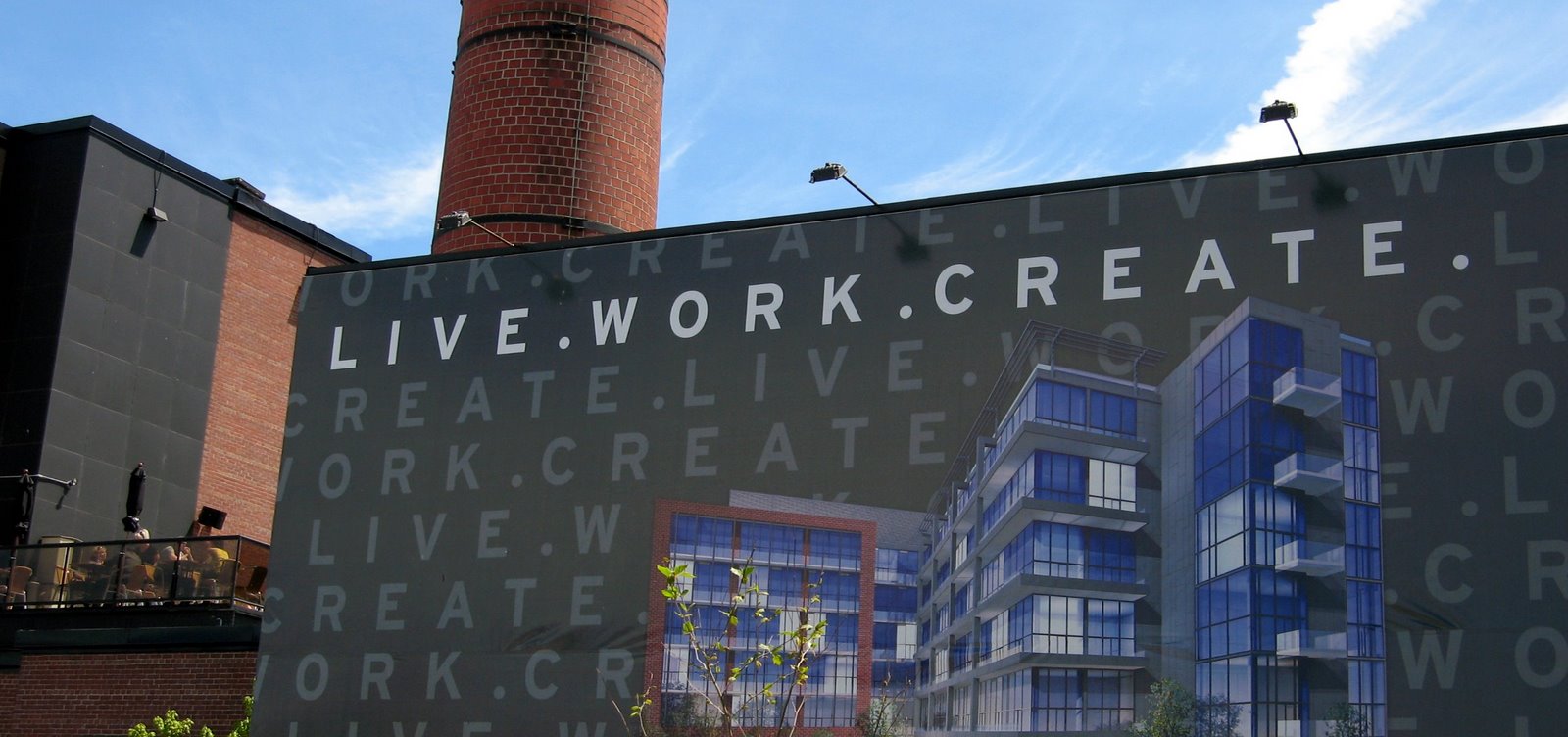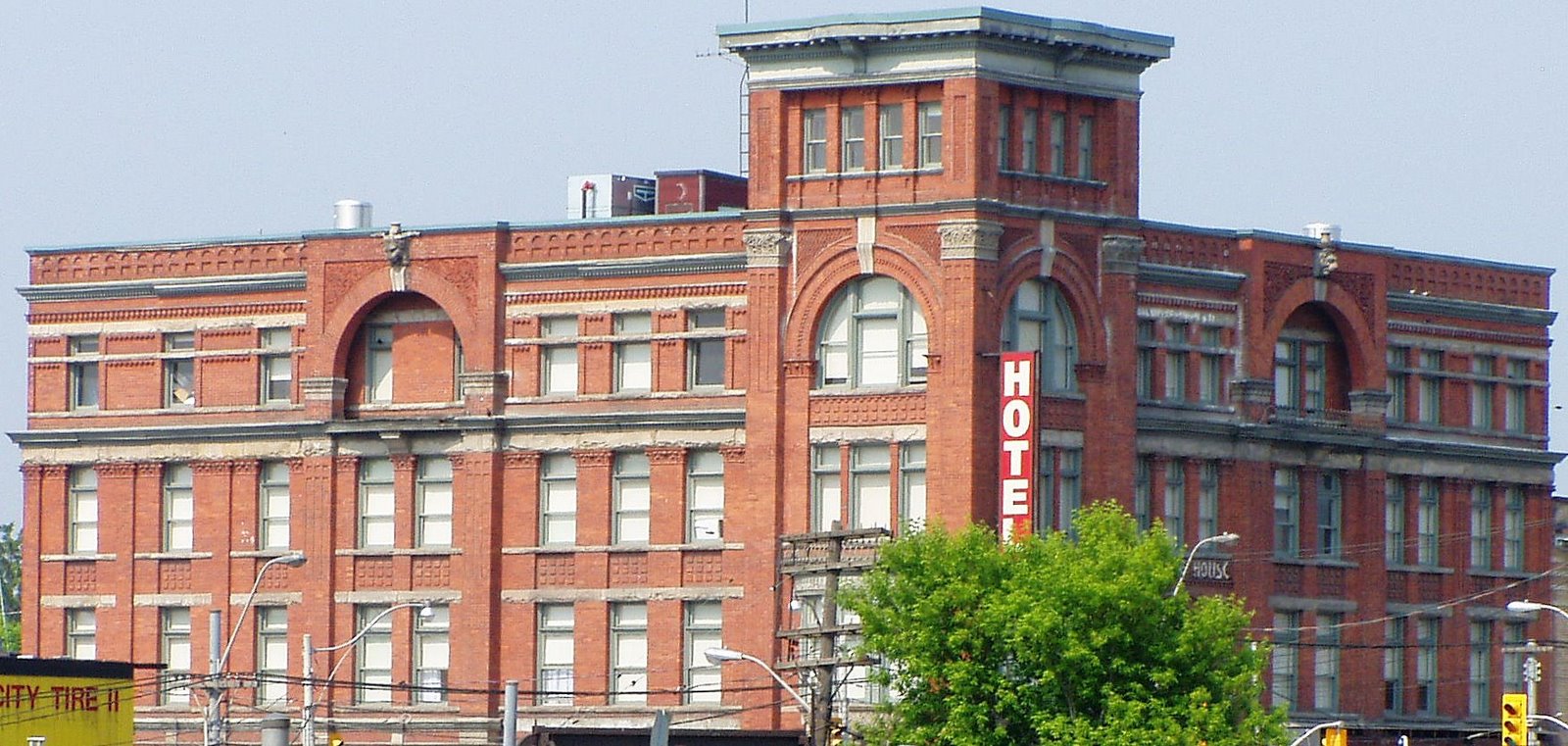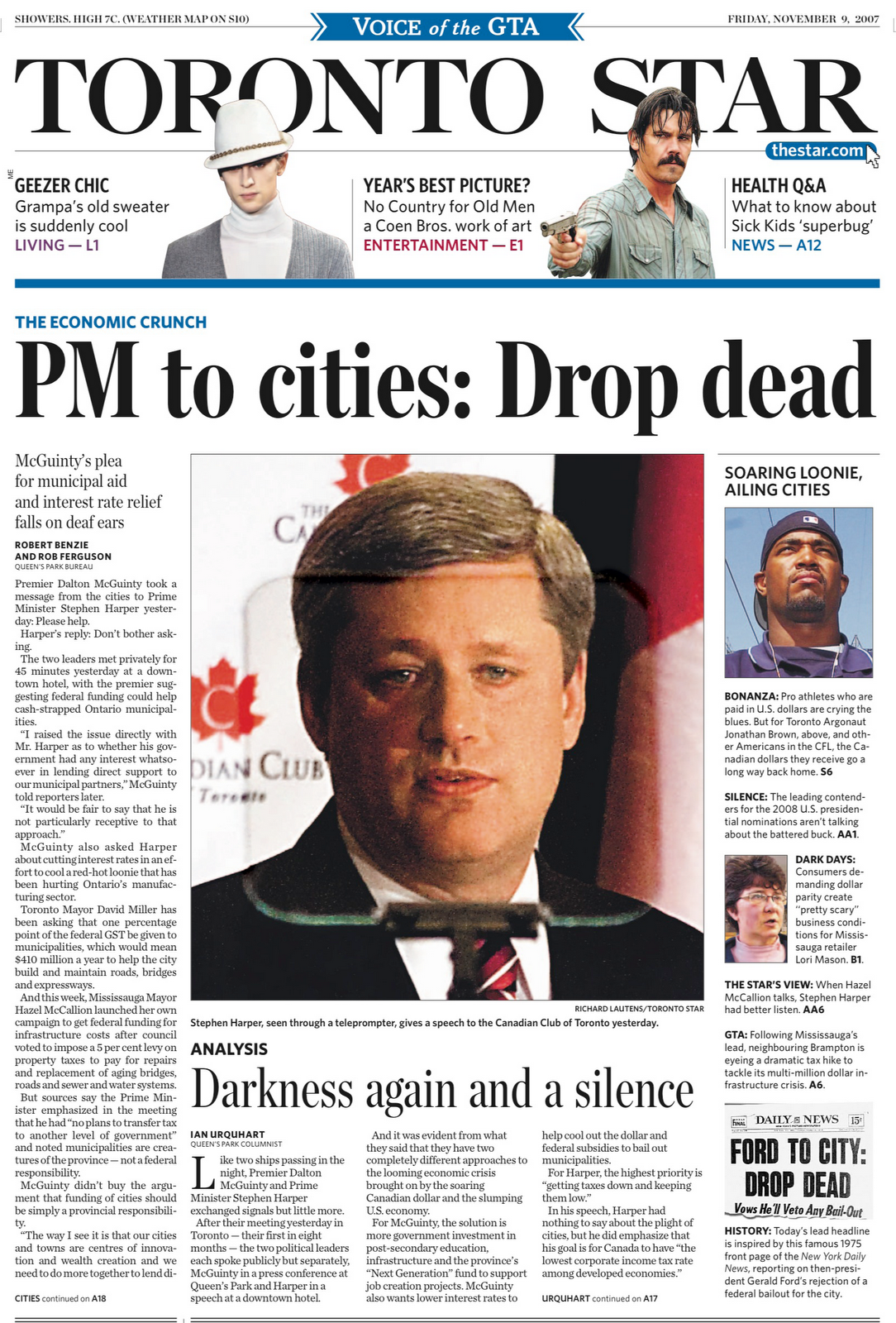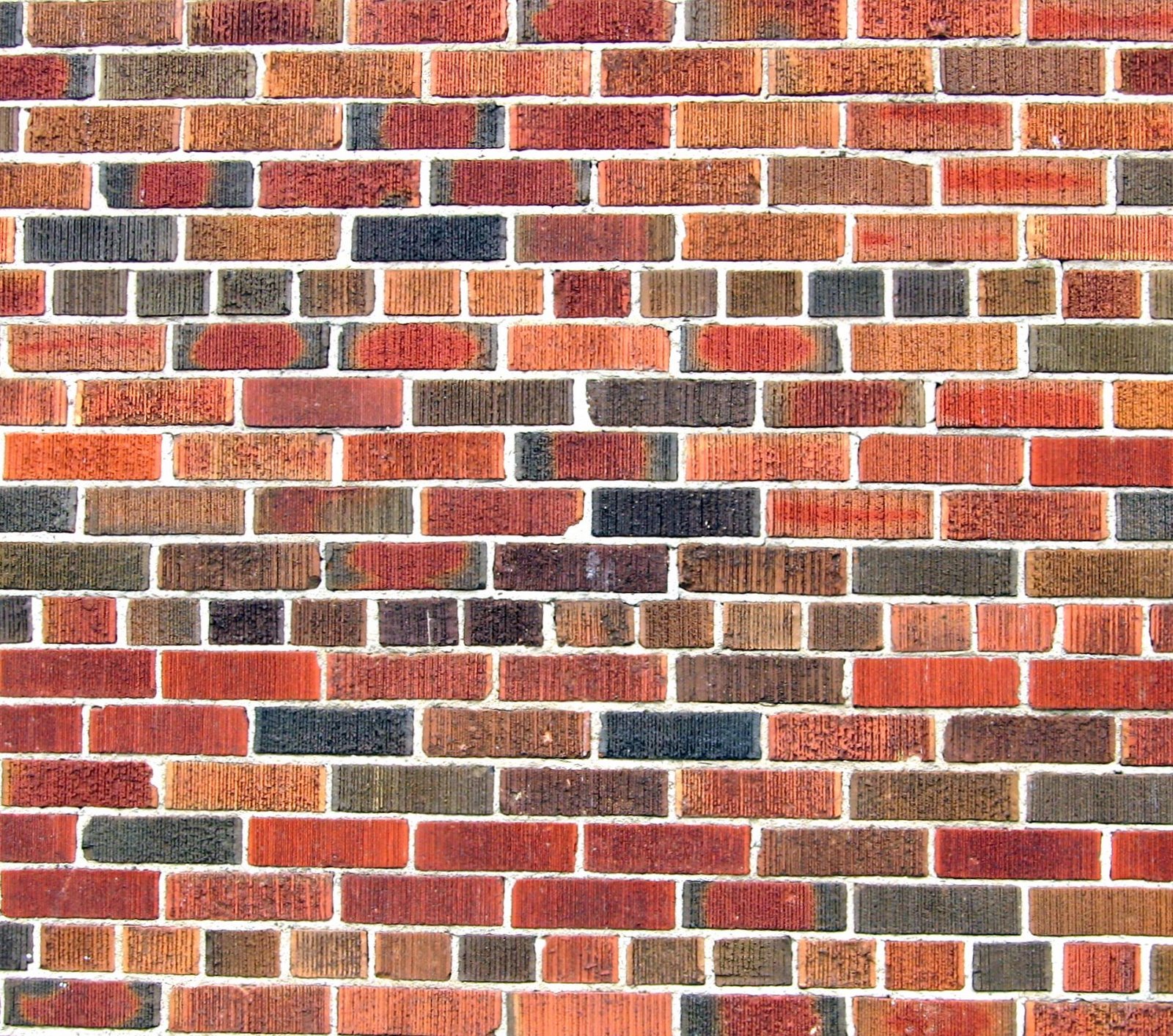By David Hulchanski, op-ed in Toronto Star, Nov 20, 2008
"We heard as well about parents whose struggle to hold down two or three jobs leaves them with no time or energy to parent, of youth being humiliated by the obviousness of their poverty, of the impact of precarious and substandard housing on their ability to study and learn and engage with friends, and about the numerous other daily stresses of living on the margins of a prosperous society." – Review of the Roots of Youth Violence, Vol. 1, p. 31.
We learned last week that among the roots of youth violence is the lack of good jobs – jobs that support a family, jobs that support an average lifestyle, jobs that support good quality housing. Though we already knew this, as a society we need to stop moving in the opposite direction.
It wasn't too long ago that our language did not include terms like "good jobs," "bad jobs" or "the working poor." How could you work and be poor?
Many people today are working more than full-time and are poor. They have no choice but to live in the growing number of very poor neighbourhoods. Money buys choice. Many neighbourhoods are becoming poor in the sense that most of the residents are living in poverty, and poor in the sense that housing, public services and transit access are all inferior relative to the rest of the city.
The growing polarization between rich and poor is happening in part because of the loss of average, middle-income jobs.
There used to be far fewer concentrations of disadvantage in Toronto. In the early 1970s about two-thirds of the City of Toronto's neighbourhoods (66 per cent) were middle-income – within 20 per cent of the average individual in-come of the metropolitan area. By 2005, the middle income group of neighbourhoods had declined to less than one-third (29 per cent).
The trend is the same in the communities around the city's boundaries – the 905 area. The number of middle-income neighbourhoods declined by 25 per cent, from 86 per cent to 61 per cent, during the same period. Now 20 per cent of the neighbourhoods in the 905 area have very low average individual incomes, compared to none in 1970.
This income polarization – the decline of the middle group with growth in the two extreme poles – is not only a general trend among Toronto's population, but it also is the basis of where we live.
The City of Toronto is now divided into increasingly distinct zones. One zone of tremendous wealth and prosperity, about 20 per cent of the city, is located mainly along the Yonge corridor and stretching east and west along Bloor and Danforth. Average household income was $170,000 in 2005, 82 per cent of the population is white, only 4 per cent are recent immigrants (arriving 2001 to 2006), and only 2 per cent are black. Some of these neighbourhoods are more white and had fewer foreign-born residents in 2005 than in 1995.
In contrast, there is a huge zone of concentrated disadvantage. It is still located in part in the traditional inner-city neighbourhoods, but now is also in the inner suburbs, the car-oriented areas built during the 1960s and 1970s. This is 40 per cent of the city, about 1.1 million people. Close to one-third of residents live in poverty (are below the low-income cut-off measure used by the federal government). Only 34 per cent are white, 15 per cent are recent immigrants, and 12 per cent are black.
Federal and provincial economic policies, while seemingly abstract and high-level, play themselves out on the ground in our neighbourhoods. Paying a growing segment of the population wages that do not support individuals, let along families, at a basic standard of living and a fundamental level of dignity is not sustainable.
The now well-documented rise in income inequality, income polarization and ethnocultural and skin colour segregation are city-destroying trends. They are trends produced by commission and omission, by public and private sector decisions.
We need to use our regulatory power for the common good to focus on improving the labour market through measures like a living wage and providing people with a voice in working conditions via a fairer path to unionization. One-sided policy-making is not only generating greater disadvantage, it is destroying the city as a great place to live and work. Nothing is trickling down. The city is increasingly segregating itself as the social distance between rich and poor increases.
Immigrants are arriving in a very different economy than they did 30 and 40 years ago. A recent Statistics Canada study concludes, for example, "that the wage gap between newly hired employees and other employees has been widening over the past two decades," the "relative importance of temporary jobs has increased substantially among newly hired employees," and that compared with "the early 1980s, fewer male employees are now covered by a registered pension plan." In short, policies have allowed fewer jobs to pay a living wage with good benefits.
This did not happen by accident.
It is not only possible but essential that we have an economy with good jobs with at least a minimum living wage for all. We need public policies that support the goals of a just and inclusive society, and we have to ensure that the use of political power benefits the common good. These are key goals of the Good Jobs Coalition and form the agenda for Saturday's Good Jobs Summit. They are essential to reversing the city-destroying trends at work in Toronto today.
David Hulchanski is a University of Toronto professor and author of the report The Three Cities within Toronto. This is one of a series of essays created for the Good Jobs Summit, which takes place Nov. 22 in Toronto.
